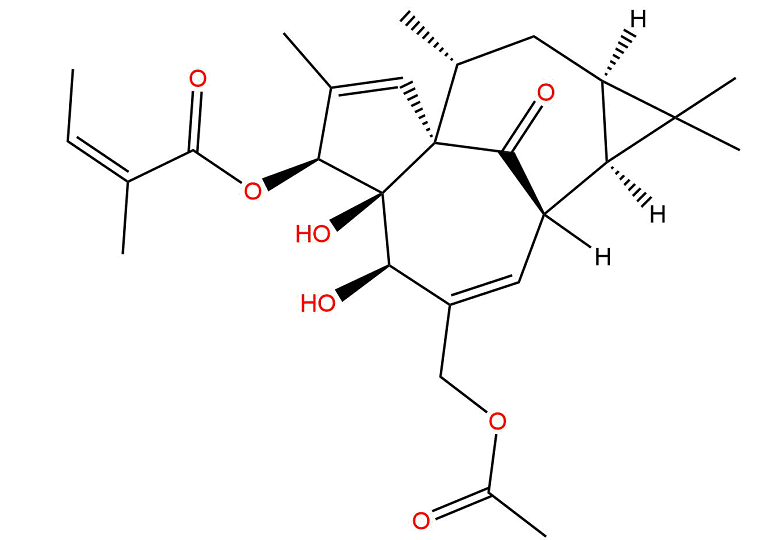
20-O-Acetylingenol-3-angelate
CAS No. 82425-35-2
20-O-Acetylingenol-3-angelate( Euphorbia factor Pe1 )
Catalog No. M22790 CAS No. 82425-35-2
20-O-Acetylingenol-3-angelate is a natural compound from Euphorbia lathyris L.
Purity : >98% (HPLC)
 COA
COA
 Datasheet
Datasheet
 HNMR
HNMR
 HPLC
HPLC
 MSDS
MSDS
 Handing Instructions
Handing Instructions
| Size | Price / USD | Stock | Quantity |
| 5MG | 495 | In Stock |


|
| 10MG | 713 | In Stock |


|
| 25MG | 1098 | In Stock |


|
| 50MG | 1467 | In Stock |


|
| 100MG | Get Quote | In Stock |


|
| 200MG | Get Quote | In Stock |


|
| 500MG | Get Quote | In Stock |


|
| 1G | Get Quote | In Stock |


|
Biological Information
-
Product Name20-O-Acetylingenol-3-angelate
-
NoteResearch use only, not for human use.
-
Brief Description20-O-Acetylingenol-3-angelate is a natural compound from Euphorbia lathyris L.
-
Description20-O-Acetylingenol-3-angelate is a natural compound from Euphorbia lathyris L.
-
In Vitro——
-
In Vivo——
-
SynonymsEuphorbia factor Pe1
-
PathwayOthers
-
TargetOther Targets
-
RecptorOthers
-
Research Area——
-
Indication——
Chemical Information
-
CAS Number82425-35-2
-
Formula Weight472.57
-
Molecular FormulaC27H36O7
-
Purity>98% (HPLC)
-
SolubilityDMSO:Soluble
-
SMILESC/C=C(C)\C(O[C@H]1C(C)=C[C@]2(C3=O)[C@]1(O)[C@H](O)C(COC(C)=O)=C[C@@]3([H])[C@@]4([H])[C@@](C4(C)C)([H])C[C@H]2C)=O
-
Chemical Name——
Shipping & Storage Information
-
Storage(-20℃)
-
ShippingWith Ice Pack
-
Stability≥ 2 years
Reference
molnova catalog



related products
-
Methyl 5-methylnicot...
Used as pharmaceutical intermediates.
-
Exo1
Exo1 is a chemical inhibitor of the exocytic pathway.
-
Nandrolone decanoate
Nandrolone decanoate is an anabolic steroid used in doping.



 Cart
Cart
 sales@molnova.com
sales@molnova.com


